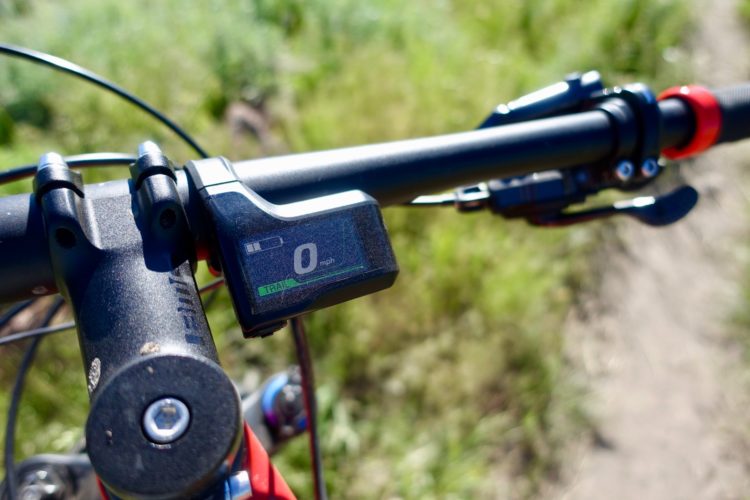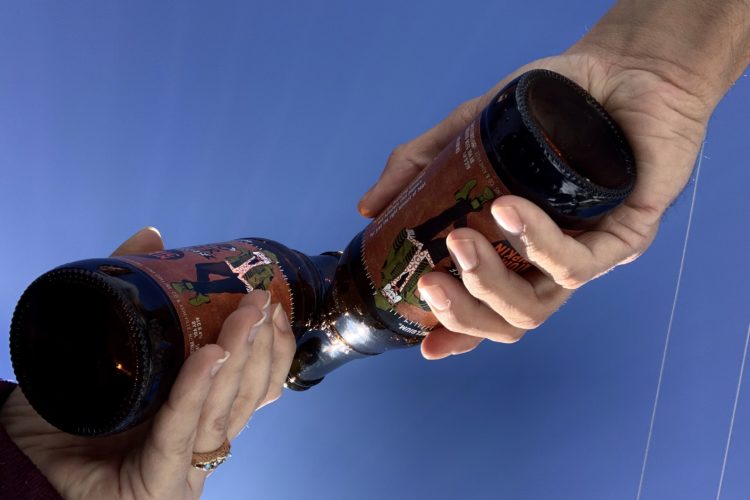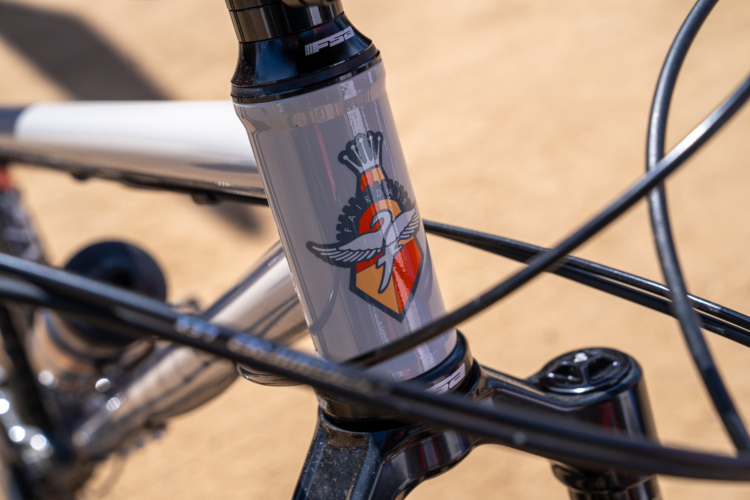
Any opinions expressed in this article belong to the author alone, and do not necessarily represent the opinions of Singletracks.com.
When our friends bring cool new toys to the sandbox they might want to play differently, and over time there will likely be a few entries added to the sandbox rulebook so we can all continue to share happily. Seems reasonable.
I would like to propose a sandbox rule to my friends who ride e-bikes: please do not climb up the DH trails. I have climbed unrideably-steep trails on an e-bike, and I fully get how exhilarating the challenge is. It’s likely the most enjoyable thing to do on a battery bike. The appeal of racing down a lap and turning around to climb the same trail is evident and equally dangerous. I recently learned of this the hard way.
In the city of Turin, Italy, most of our local gravity laps descend from one of two peaks, with roughly 100km of additional hiking and XC-style trail stretched between. My favorite lunch loop option is to ride up a two-way singletrack ribbon called Trail 26, then descend Trail 61, Calcetano Trail, or Tano Hill, all of which are fairly steep and rowdy black-diamond-style fun. When those are wet we head to the south-facing trails of Chiesetta, where a pretzel of braided jump lines descends from a tiny church, or chiesa. The trails are all built by a few gravity enthusiasts, and the variety of jumps ranges from knee-high booters that most of us hit to a five-meter-gap between two overhead ramps that only the trail builders ride.
On one mid-day pedal this winter I decided to climb the asphalt to Chiesetta for a short and sweet workout. With a spirited pace, the peak is 45 minutes from my door, then I slide kneepads up to slide down the trail and back to this keyboard in 75 minutes total. The tracks in the Chieseta pretzel couldn’t be more obviously gravity-oriented. There are a few intentional rock gardens, wooden ramps and drops, and various speed-ready berms between it all. With the drops, some of the trail is actually unrideable uphill, no matter what your motor is powered by.
I was feeling focused on this particular lap, and in a hurry to get home to interview someone over the phone. There are multiple corners you can’t see around on the trail, and jumps where you can’t spot the landing until you’re airborne. Riding with the brakes open has always been safe on these tracks because no one hikes on them and they are too steep ride up. Or, they were.
When I reached the third segment of the descent, called Cretaceo, which sits in a deep gulley, using the walls as berms, I had a little run-in with three e-bike riders who were climbing the segments they could manage. They were lined up like bowling pins mid-trail as I ripped around a corner peering at the next. Fortunately, some cyclocross muscle-memory kicked in and I whipped the bike sideways for a fumbled running dismount. They passed by, smiling as if they hadn’t seen me nearly miss plowing each of them and likely sending us all to the virus-riddled hospital. With the anger that only accompanies a deep animalistic fear, I asked them to please climb the adjacent uphill trail so no one gets hurt. Maybe for the better, given my visible vexation, they rolled on without a word.
The riders didn’t look like newcomers. They all had well-worn knee pads and full-face helmets on. They likely know very well the joys of uninhibited gravity speed.
This sort of negligence is going to cause some real problems. If folks are going to race mountain bikes there have to be a few gravity trails where we can release the brakes and know that the track will be clear of other humans. We need places to practice and improve at speed. If people are climbing those trails on e-bikes, it won’t be long before batteries are not wanted in the sandbox. We’ll have the same division between battery bikers and muscle bikers that many places experience between hikers and bikers.
It makes sense that e-bike riders want to practice steep and technical climbs, and that is a genuinely cool element of the battery-powered racing genre. However, there are far more scrappy walls to climb up than there are gravity trails to ride down. Please hone technical climbing skills where no one has to risk their lives. At the very least, consider climbing those DH tracks at night, when you can see the light of an oncoming rider with enough notice to move safely out of the way. I’m not advocating that all or even most trails be unidirectional, but one or two downhill-only tracks in a system seems like a reasonable and safe request.
With the great pandemic bike-boom, our local trails have experienced some of their first real user conflicts. That’s impressive for an active city of nearly a million residents. Hikers are taking to social media to share their stories of rude riders, signs are being posted and removed at trailheads, and those of us who know where this conflict can go are being over-the-top friendly out on the trail to balance the scale a bit. I hope my e-bike riding friends can see the division that will be created if people get hurt because they choose to climb DH trails.
To be as clear as fresh mountain air, I dig e-bikes, and I have friends who ride them right alongside me. Nearly anything that gets folks off the couch, away from screens, and into the forest is a net positive. Let’s keep it that way.



















